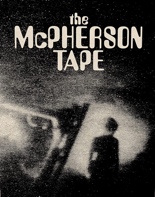
 Dead Dicks does itself no favor with that title, suggesting a farce the dark-humored film never quite becomes, or a piece of juvenilia the speculative sci-fi picture is clearly too mature to be. It may attract the wrong kind of audience. It may set the curious up to be profoundly disappointed. It deserves better.
Dead Dicks does itself no favor with that title, suggesting a farce the dark-humored film never quite becomes, or a piece of juvenilia the speculative sci-fi picture is clearly too mature to be. It may attract the wrong kind of audience. It may set the curious up to be profoundly disappointed. It deserves better.
Said title refers to Richie (Heston Horwin, Rock Steady Row) and the three carbon-copy corpses of himself littered about his pigsty apartment. A starving artist with debilitating mental health issues, he has successfully killed himself thrice, even if each demise immediately results in a reborn Richie emerging buck-naked (and explicitly uncircumcised) through the giant vagina that is his bedroom wall.
Wait, what?
 His ever-supportive, long-suffering sister, Becca (Jillian Harris), shares your reaction when she arrives Richie’s place to check on him. Processing the unprocessable, she is torn between helping him and getting him help, which don’t always overlap.
His ever-supportive, long-suffering sister, Becca (Jillian Harris), shares your reaction when she arrives Richie’s place to check on him. Processing the unprocessable, she is torn between helping him and getting him help, which don’t always overlap.
Every mention I’ve seen of Dead Dicks thus far name-checks Groundhog Day, but with several versions of Richie sharing the cramped quarters, I would argue the Canadian indie shares more thematically with another Harold Ramis film: Multiplicity starring Michael Keaton, Michael Keaton and Michael Keaton. But again, I stress that despite parts that may be funny, Dead Dicks is no comedy … unless comedies have started carrying suicide-prevention PSAs before minute one.
In their feature directorial debut, scribes Chris Bavota and Lee Paula Springer make a loud splash with a high-concept mindfuck operating on little more than two brave, believable performances and the hard-charging assault of Tusk & Bruiser’s melodic post-rock to chart their arc. Although the second half can’t match the energy of the first, ingenuity reigns throughout. —Rod Lott








